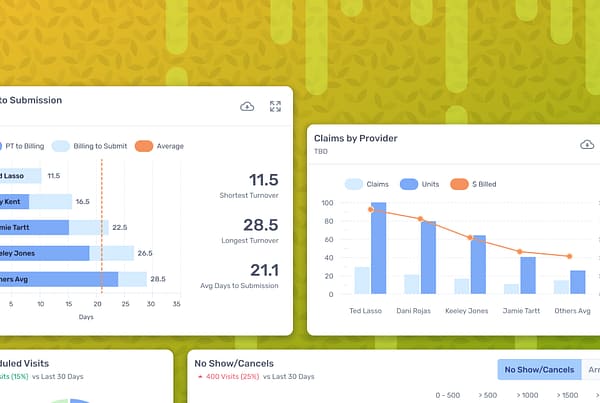
Physical therapy is a dynamic field that often requires a delicate balance of clinical acumen and administrative efficiency. One critical aspect of this balance is the correct usage of Current Procedural Terminology (CPT) codes for billing purposes. They are a Goldilocks-style problem: too high or too low, and you can run into trouble. The key is finding the “just right” CPT code, optimizing for both accuracy and appropriateness.
Inappropriate code selection can lead to a myriad of issues. Undercoding or missing codes can lead to time inefficiencies and missed revenue opportunities, while overcoding without appropriate justification can lead to compliance risks and possible audits. One solution to this delicate balance may lie in the realm of artificial intelligence.
AI to the rescue
Artificial intelligence (AI) aims to simulate human-like intelligence in machines, with tasks that include problem-solving, pattern recognition, and understanding natural language. AI algorithms are capable of processing and understanding the intricate text of documentation notes. By analyzing each sentence in a note, AI can help determine the most appropriate CPT code, providing an effective solution for optimal code selection.
AI’s text analysis capabilities can go far beyond just finding key terms or phrases. It can detect patterns and make connections within the text to identify the correct code even when the clinical scenario is complex. AI can also learn from previous coding decisions, continually improving its accuracy and efficiency over time.
Key findings from AI-driven CPT coding analysis
One of Prompt’s Integration Partners, PredictionHealth, has been leveraging AI models to analyze coding with a feature called CPT Insights across tens of millions of units. This feature identifies both revenue opportunities (undercoding) and compliance risks (overcoding) by analyzing the codes and text for all intervention descriptions and justifications.
In an analysis of the primary CPT Codes billed by clinicians — therapeutic exercise (97110), therapeutic activities (97530), and neuromuscular reeducation (97112) — PredictionHealth’s CPT Insights showed that therapists often have a hard time selecting the proper code based on their clinical documentation. In the analyzed dataset, we saw that the incorrect code was selected nearly 20% of the time, which can lead to improper reimbursements and increase risk of an audit. By leveraging a tool like PredictionHealth, practice owners can help improve their therapists ability to select the proper coding based on their documentation, which can help increase efficiency and accuracy while also potentially improving the bottom line.
Finding the right balance
Optimal code selection using AI allows physical therapists to focus more on patient care without worrying about administrative tasks. An AI model can assist with compliance and appropriate billing, significantly reducing the risk of undercoding or overcoding.
While the TE vs. TA vs. NR analysis shows an opportunity in the industry to secure more revenue, it’s crucial here to not view AI as a tool for “maximizing” billing but rather as a means to achieve accuracy and appropriateness. AI is there to show an optimal path, ensuring you avoid potential pitfalls on either end of the spectrum.
Looking towards the future
The utilization of AI in physical therapy can not only streamline administrative tasks but also enhance clinical decision-making. It can transform the way we view and interact with documentation and coding, making it a valuable ally in the quest for clinical efficiency and optimal patient care.
Prompt and PredictionHealth are committed to using modern technology to make clinics more efficient and improve the lives of everyone at PT practices, so they can better improve the lives of their patients. AI supercharges that mission and we’re excited to be bringing it to the outpatient therapy industry.
About the author:
Pedro Teixeira, MD, PhD received his degrees from Vanderbilt University, where he applied machine learning and natural language processing (NLP) methods to extract phenotypic information from electronic health records (EHR) and identify associations with genetic variants. Pedro and Ravi Atreya launched PredictionHealth in January 2017, dedicated to helping clinicians and healthcare organizations understand and utilize data in their EHR to ensure compliance and that every patient gets the best care every time. He has also presented his work broadly and won several awards, including first place in IBM’s The Great Mind Challenge (Watson Technical Edition 2013).




